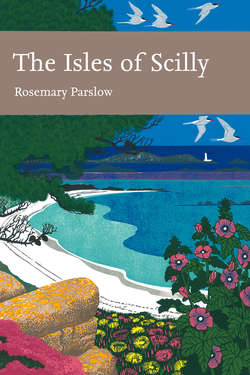Читать книгу The Isles of Scilly - Rosemary Parslow - Страница 51
WETLANDS
ОглавлениеOn St Mary’s there are two large wetland nature reserves, Higher Moors and Lower Moors. Higher Moors is fed by a stream that arises in Holy Vale and flows down through the Holy Vale nature trail through the tangle of tall elm trees, grey sallow and understorey of wetland plants either side of the raised pathway. The stream continues through an area of rank grassland and yellow iris. In the stream grow tall plants of fool’s-water-cress, water-cress Rorhippa nasturtium-aquaticum and hemlock water-dropwort. Higher Moors nature reserve and SSSI include both the ‘moor’ and Porth Hellick Pool. Access to the reserve is via a path leading from the road to the coast. Within the reserve views can be made from the boardwalk through the reedbed and from two bird hides overlooking the pool. Along the path a line of very large tussock-sedge Carex paniculata plants usually attract attention as they are up to a metre and a half high and have ferns and other plants growing epiphytically on their trunks. It seems quite shocking now to realise that at one time attempts were made to destroy the plants by killing them with herbicide and burning them. Fortunately, in more enlightened times, clearance of vegetation from around the sedges and cutting back the willow carr has encouraged them to spread. There are also some magnificent stands of royal fern as well as the ubiquitous lady fern Athyrium filix-femina throughout the site.
The Lower Moors nature reserve is situated in a low-lying area between Hugh Town and Old Town Bay (Fig. 37). A stream flows through the site to the sea at Old Town. Part of the area is reedbed, part marsh composed of beds of a very lax local variety of sea rush Juncus maritimus (the endemic var. atlanticus, according to
FIG 37. Lower Moors from the air, February 2004. (Rosemary Parslow)
Lousley), and there are areas of grey sallow carr, as well as a small pool and a scrape with bird hides on the bank. The pools and surrounding vegetation attract rare birds in the migration season. There are ditches, wetter areas and more open areas, all of which support a range of typical wetland plants.
There are also a few other small freshwater pools on St Mary’s, although several have generally degenerated into duck ponds. There is a pond beside the road from Porthloo to Rose Hill which, with the two fields on the west and Well Field on the east, is managed by the Isles of Scilly Wildlife Trust as a nature reserve. These fields are composed of a mixture of wetland plants and open grassland. Very little of nature conservation interest remains in the duck pond these days; it has largely been given over to a collection of exotic ducks and a few half-tame moorhens Gallinula chloropus.
Two small freshwater pools at Newford, the Argy Moor pools, drain into the Watermill Stream. Originally designed as ponds as part of a failed attempt to grow flax (presumably the ponds would have been used to steep the plants), the ponds are now very eutrophic due to the large numbers of semi-domestic ducks that frequent the site. There are a number of introduced plants around the ponds and a few marginal species such as soft rush, but there now (2006) appear to be no aquatic plants, although prior to the invasion of water fern Azolla filiculoides there had been a typical aquatic flora (Lousley, 1971). Whether it was the strenuous attempts to get rid of the water fern using herbicides that also eliminated all the aquatic plants, or whether the conditions of the ponds are no longer suitable, is unclear.
Shooter’s Pool, a small pool on farmland behind Lower Moors, is being developed to provide freshwater habitats for birds by the Isles of Scilly Bird Group (in 2005 the pool attracted a black-winged stilt Himantopus himantopus). This pool at one time had a population of the rare lesser water plantain, but this apparently disappeared some years ago. It will be interesting to see whether the plant reappears in future.
